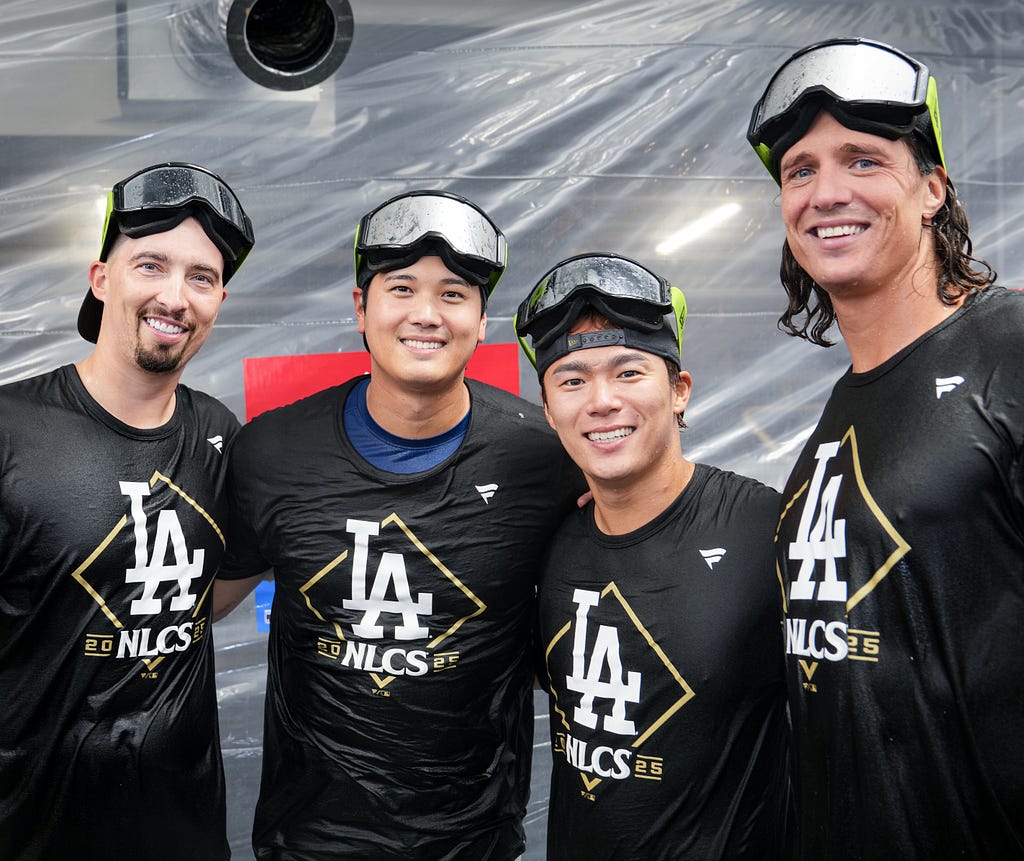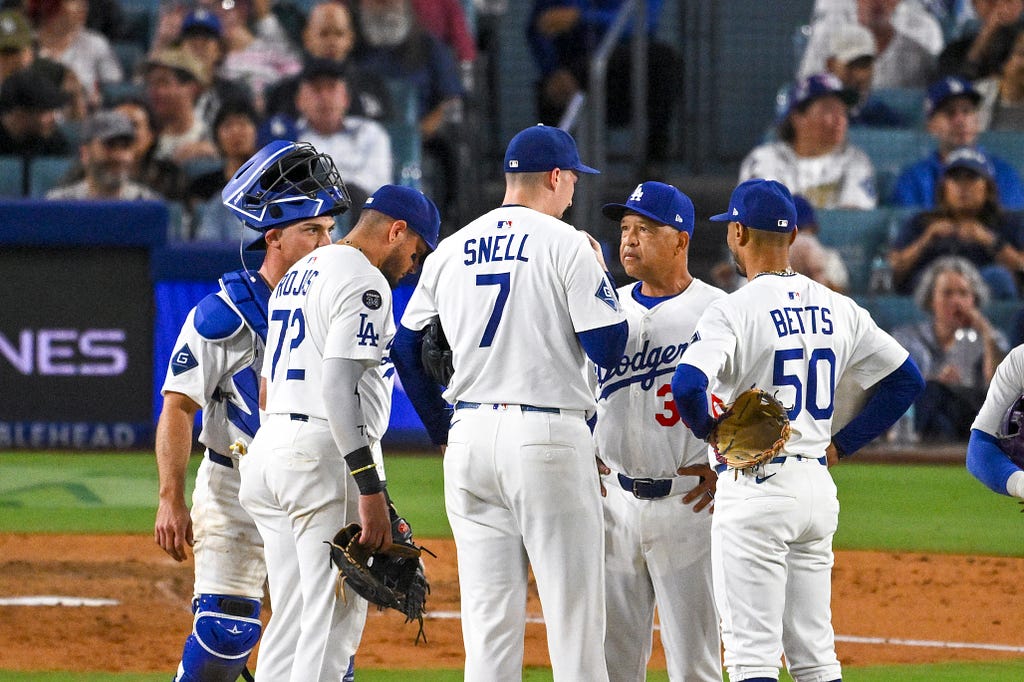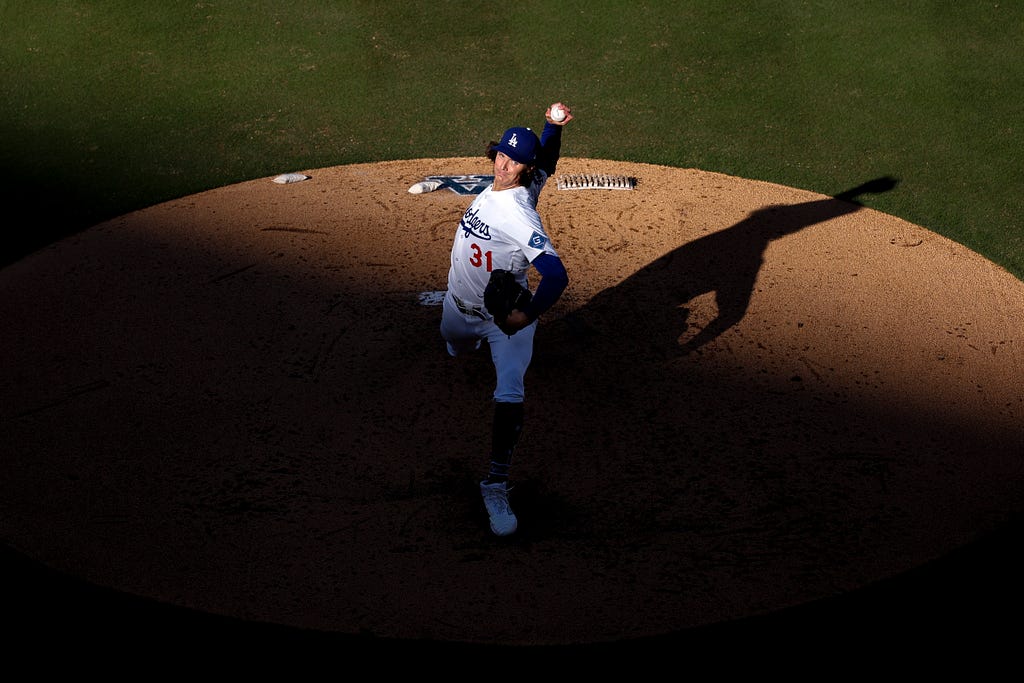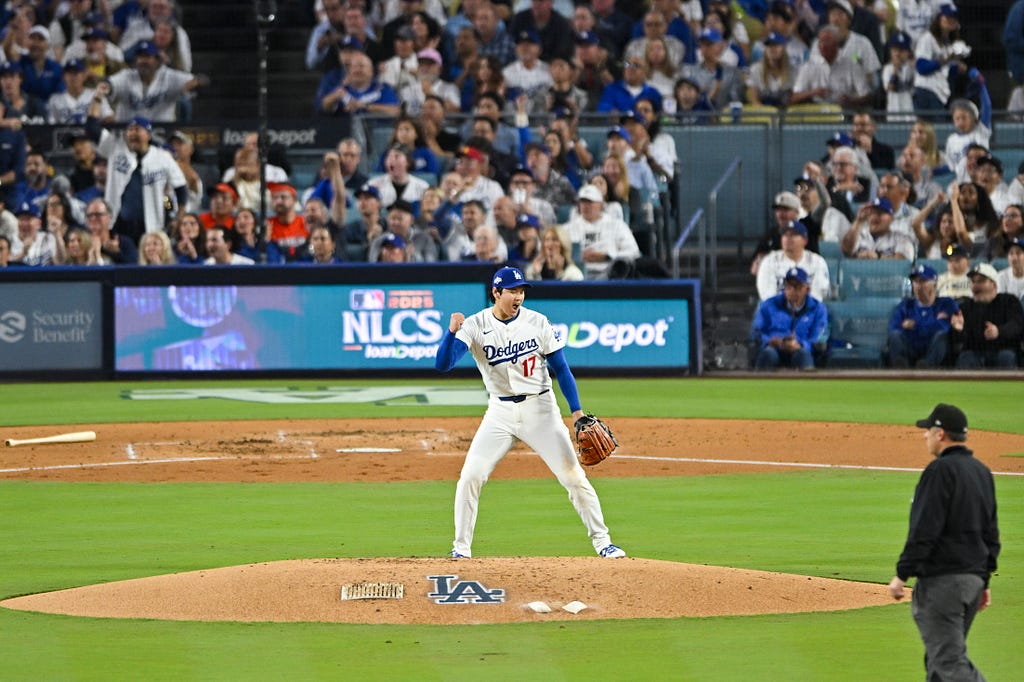
by Cary Osborne
August 2 marked a turning point for the 2025 Los Angeles Dodgers.
The Dodgers were playing in tiny George M. Steinbrenner Field in Tampa, Fla. against the Rays, and Blake Snell was back on a Major League mound.
The two-time Cy Young Award winner went exactly four months between Major League starts, with left shoulder inflammation the cause of a lengthy injured list stay.
Not everything had gone according to plan for the Dodgers in 2025. This — starting pitching dominance — did.
It just took a little longer than expected.
Starting pitchers went down for months, bullpen games were a necessity and 16 different pitchers started a game before the All-Star Break.
Snell’s return finalized the Dodgers’ postseason rotation. Tyler Glasnow had rejoined the team on July 9, Shohei Ohtani was nearly reaching five innings per start as he completed his rehab progression, and Yoshinobu Yamamoto remained a steady presence at the top of the rotation.
Days after Snell’s return, manager Dave Roberts made a statement about this starting rotation.

“Our goal hasn’t changed — it’s to win the World Series,” Roberts said. “And we’re going to do that this year with starting pitching.”
Now the Dodgers are in the World Series, with starting pitching being a pretty good explanation as to how.
During the National League Championship Series, Roberts and pitching coach Mark Prior reflected on how Dodger starting pitching got to the point of producing one of the most dominating performances in postseason history by a collective.
One — the names: Snell, Yamamoto, Glasnow and Ohtani.
And two — other names. Roberts and Prior mentioned Clayton Kershaw, Dustin May, Tony Gonsolin, Emmet Sheehan, Justin Wrobleski and Ben Casparius.
May was dealt to the Red Sox at the trade deadline after making 19 starts for the Dodgers. Gonsolin’s season ended in August. Kershaw, Sheehan, Wrobleski and Casparius have a combined four relief appearances this postseason.
Roberts and Prior could have also mentioned Roki Sasaki and Landon Knack, who started a combined 15 games this season.
All those pitchers have their fingerprints on the postseason success of the Dodger starting rotation.
“Every year is a learning experience for us as a staff, as coaches, as players. And I think ultimately, when it comes down to it, there’s no one way to win ball games,” Prior said. “There’s no one way to win a division. But I think the one constant that, at least from my time here in LA, is we use a lot of people. We use our roster. Our front office does a really good job of providing depth from the beginning of the season and supplementing it as the season goes on. And it allows us to use guys to bring in, to get big outs, even if it’s for two or three games. There’s a lot of people who participate in winning ball games.”
A lot of that participation was before the All-Star Break.
Three factors favored the Dodgers in late spring and early summer: deep starting pitching (with the ability to call on dependable young arms from Triple-A Oklahoma City), a high-scoring offense, and their division rivals’ struggles.
The Padres, Diamondbacks and Giants each went 26–28 in May and June. The Dodgers used 13 different starting pitchers during the span and went 32–22.
That bought time.


“None of those injuries at that point in time — whether it’s Blake Snell, whether it’s Tyler, whether it was Clayton, anyone, where it was going to be longer term,” Roberts said. “So we felt that we have to make sure that the ramp-up process was sound, not rushed, to make sure that they could be ready for the postseason. So I think our training staff, coaches did a fantastic job.”
“And the other part was, it gave opportunities to guys like Sheehan, Wrobleski and others to then help their development,” Roberts added. “So I think that with that, we’ve done a great job of the kind of now getting the younger players, they’re cutting their teeth as starters, getting innings. And then also having our other guys save bullets and getting ready to go throughout the postseason. So, I don’t think you could have lined it up any better.”
Roberts said it was fair to say the Dodgers were cautious with Snell. Could he have pitched earlier?
“Possibly,” Roberts said.
But small picture (this season and postseason) and big picture (he signed with the Dodgers for five years in the offseason) were most important when the Dodgers were doing the math on his return.
Snell started on April 2 and didn’t have a Major League start again until Aug. 2.
And if that date was a turning point, full throttle ahead was early September.
Yamamoto was one out away from a no-hitter on Sept. 6.
Kershaw didn’t allow a hit until the fourth inning on Sept. 7.
The Dodgers, with Glasnow throwing seven no-hit innings, were three outs away from a combined no-hitter on Sept. 8.
Add Sheehan, who was perfect through five innings against the Rockies at Dodger Stadium on Sept. 9.
Snell allowed two hits in six innings on Sept. 10.
Ohtani also got in the mix, firing five no-hit innings against the NL East champion Phillies on Sept. 16. The Phillies, at that point, led the Majors in runs, batting average and OPS in September.
From Sept. 6 till Sept. 28 — the Dodgers’ final 21 regular-season games, the starting rotation had a 1.52 ERA, struck out 146 batters in 112 1/3 innings and limited the opposition to a .146 average and three home runs. Snell, Yamamoto, Glasnow and Ohtani made up 13 of those starts.

“I think we were able to throw enough innings to where we can learn from mistakes and get a lot better from that as well,” Snell said heading into the NLCS. “So I really like where the starting staff’s at. Yoshi is really the only guy who really posted the whole year. But for everybody else, to be healthy, feeling good, confident with the amount of innings they had on the season, to be able to pitch in the postseason, I really like where we’re at.”
Dodger starters have been better in the postseason than that outstanding 21-game run. They have a 1.40 ERA, struck out 81 batters in 64 1/3 innings and limited the opposition to a .132 average and two home runs in 10 games.
“Everything is coming together right now,” Glasnow said. “We know how good of a team we have. The adrenaline makes us all play up. Everything’s firing now.”
At the perfect time.
It just took some time.
2025 World Series: It all starts with the rotation was originally published in Dodger Insider on Medium, where people are continuing the conversation by highlighting and responding to this story.
